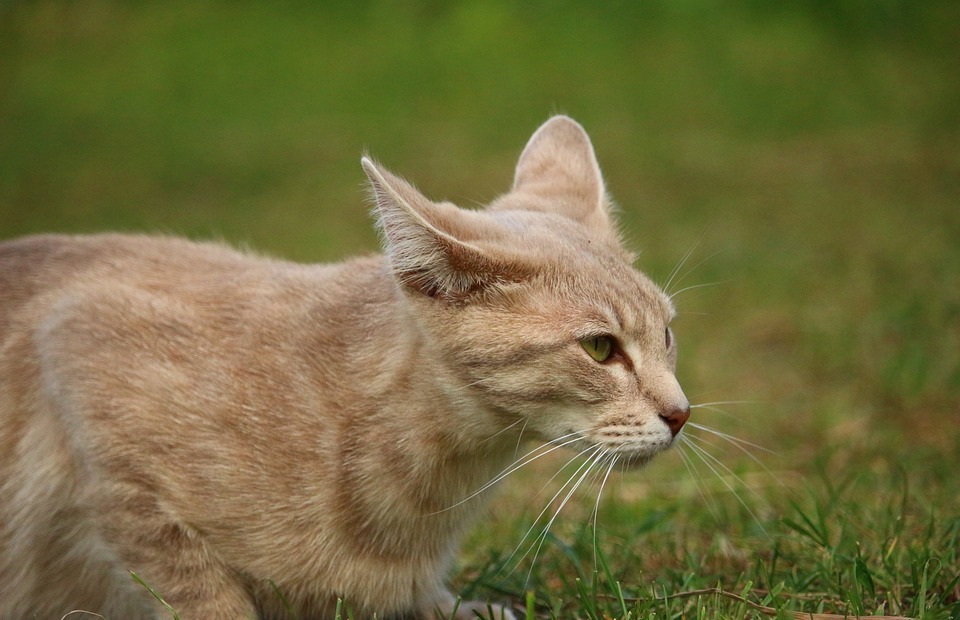Bringing a new cat into your home can be an exciting time, but it's crucial to ensure a smooth introduction to avoid stress and conflict for both your resident cats and the newcomer. This guide will provide you with a comprehensive roadmap for successful introductions, helping you navigate the process and create a harmonious multi-cat household.
Part 1: Preparation and Planning

1.1. Choosing the Right Cat
Consider Your Resident Cat's Personality: A laid-back, tolerant cat might welcome a playful kitten, while a more solitary feline may prefer a calmer companion. Take note of your resident cat's typical interactions with other animals, their playfulness, and their comfort levels in social situations.
Seek Compatibility: Assess your resident cat's age, temperament, and health before selecting a new cat. Young kittens are often more adaptable and playful, while senior cats might prefer a gentle, mature companion. Consult with adoption centres or shelters for guidance on selecting a compatible cat based on your resident cat's personality and needs.
Discuss with Your Vet: Get your vet's input on potential health and behavioural risks, particularly if your resident cat has underlying medical conditions. For example, if your resident cat has a history of feline leukemia virus (FeLV) or feline immunodeficiency virus (FIV), you should avoid introducing a cat with the same conditions.
1.2. Setting the Stage: Preparing Your Home
Create Separate Spaces: Establish safe havens for both cats, with food, water, litter boxes, and scratching posts in each area. This gives them privacy and reduces anxiety. These safe havens should be easily accessible, quiet, and ideally located in different rooms or sections of the house.
Scent Swap: Exchange bedding or toys between the cats before the official introduction. This familiarises them with each other's scents, lessening the initial shock. For instance, swap a blanket from your resident cat's bed with one from the new cat's carrier or crate.
Choose a Neutral Ground: Opt for a room with minimal distractions, like a bathroom or laundry room. Ensure it is free of clutter and escape routes. This neutral ground should be clean and comfortable, with ample space for both cats to move around freely.
Part 2: The Initial Introduction

2.1. The First Encounter: A Gradual Approach
Start with Scent Only: Allow the cats to sniff each other's scent under the door or through a carrier for a few days. This helps them become accustomed to each other's presence. Place the new cat's carrier or crate near your resident cat's favorite spots, allowing them to sniff each other's scents through the fabric or bars.
Visual Introduction: Introduce them through a barrier, such as a door or a baby gate. This allows them to see each other without direct contact. Keep the initial visual introductions short, allowing them to observe each other for a few minutes at a time.
Short and Sweet: Keep initial encounters brief, lasting no more than a few minutes at a time. Gradually increase the duration as the cats become more comfortable. As they become more accustomed to each other, you can gradually increase the length of their supervised interactions.
2.2. Body Language and Signs to Watch For
Positive Signs: Relaxed posture, tail held high, slow blinking, purring, gentle rubbing, and playful behaviour. These signs indicate that the cats are feeling comfortable and curious about each other.
Negative Signs: Hissing, growling, arched back, flattened ears, dilated pupils, swatting, and hissing. These behaviours suggest fear, anxiety, or aggression and should be taken as a signal to separate the cats immediately.
Calm and Control: If you observe signs of tension, separate the cats immediately and reassess the situation. Remain calm and avoid making any sudden movements that could frighten the cats.
Part 3: Encouraging Positive Interactions

3.1. Playtime: Bonding Through Fun
Interactive Play: Use toys to engage both cats simultaneously, keeping them focused on the toy rather than each other. This redirects their attention and creates positive associations with each other through shared enjoyment.
Targeted Treats: Reward positive interactions with treats and praise, strengthening their association with each other. Offer treats to both cats when they exhibit calm and friendly behaviour towards each other.
Supervised Play: Never leave the cats unsupervised during playtime, especially in the early stages of introduction. Constant supervision ensures you can intervene if any tension or aggression arises.
3.2. Feeding Time: Shared Meals, Shared Space
Separate Feeding Stations: Initially, feed the cats in their designated safe spaces. This ensures they feel comfortable and secure while eating.
Gradually Introduce Shared Feeding: Slowly transition to feeding them close to each other, gradually reducing the distance between their bowls. Begin by placing their bowls side by side, then gradually move them closer together over several days.
Avoid Competition: Use multiple bowls if necessary to prevent food guarding and ensure both cats feel comfortable. Offer multiple food and water bowls to ensure both cats feel they have enough resources.
Part 4: Managing Stress and Conflict
4.1. Identifying Stress Signals: Understanding Their Behaviour
Hiding: Seek refuge in their safe spaces, especially in the presence of the other cat. Hiding behaviour indicates that a cat feels overwhelmed or anxious and needs time to recover.
Excessive Grooming: Grooming beyond normal levels as a coping mechanism. Excessive grooming can be a sign of stress and anxiety, particularly if it's accompanied by other stress signals.
Changes in Appetite: Loss of appetite, overeating, or picky eating. Changes in appetite often reflect stress and anxiety.
Vocalization: Excessive meowing, hissing, or growling. Increased vocalization can signal a cat's discomfort or anxiety.
4.2. Creating a Peaceful Environment: Stress Reduction Strategies
Provide Plenty of Resources: Ensure each cat has ample access to food, water, litter boxes, scratching posts, and hiding places. This creates a sense of security and reduces competition for resources.
Use Calming Pheromones: Pheromone diffusers or sprays can help reduce anxiety and create a more relaxed atmosphere. These products mimic the natural calming pheromones that cats produce.
Environmental Enrichment: Engage them with interactive toys, puzzle feeders, and cat trees to divert their attention. Enriched environments provide stimulation and reduce boredom, which can contribute to stress.
Part 5: Dealing with Conflict: Resolving Disputes
5.1. Addressing Bullying: Stopping Aggressive Behaviour
Interrupt and Redirect: If one cat bullies the other, firmly but calmly intervene, redirecting them with a loud clap or a spray bottle. Intervene promptly and decisively to prevent escalation.
Separate and Reassess: Immediately separate the cats and reassess the situation before attempting another introduction. Give both cats a break and a chance to calm down before attempting another interaction.
Consult a Professional: Seek help from a certified animal behaviour consultant for persistent aggression, as it may require more tailored interventions. A behaviour consultant can assess the situation, identify the root of the aggression, and provide tailored advice.
5.2. Dealing with Fear: Building Confidence and Trust
Patience is Key: Allow the cats time to adjust to each other's presence and become accustomed to their shared space. Patience is crucial, as it takes time for cats to build trust and establish a comfortable relationship.
Positive Reinforcement: Reward positive interactions with treats, praise, and petting. Positive reinforcement helps to create positive associations between the cats and fosters a sense of calm.
Create a Calm Environment: Minimise stressors such as loud noises, sudden movements, or unfamiliar people. Create a peaceful and predictable environment to promote relaxation and reduce anxiety.
Part 6: Building a Strong Bond: Nurturing Their Relationship
6.1. Shared Activities: Enhancing Their Connection
Playtime Together: Encourage interaction by engaging them with shared toys or games. Use interactive toys that require both cats to work together, such as a fishing rod toy or a tunnel.
Grooming Sessions: Allow them to groom each other, promoting bonding and affection. Some cats enjoy being groomed by their companions, which can be a bonding experience.
Nap Time Together: Create a comfortable and inviting space for them to cuddle and rest together. Offer a large, comfortable bed or cat tree where both cats can relax and enjoy each other's company.
6.2. Maintaining Harmony: Continuous Support
Monitor Interactions: Continue to observe their behaviour, even after they seem comfortable with each other. Be vigilant and watch for any changes in their behaviour that might suggest tension.
Address any Changes: Be prepared to adjust the introduction process if you notice any signs of stress or conflict. Be flexible and willing to adapt the introduction plan as needed.
Consistency is Crucial: Maintain consistent routines and expectations for both cats. Establish consistent feeding times, playtime schedules, and routines to create a sense of predictability and security.
Part 7: FAQs
7.1. How long does it take for cats to get along?
There is no set timeline for cat introductions. It can take a few days, a few weeks, or even months for cats to fully adjust and develop a comfortable relationship. Be patient, consistent, and observant throughout the process. The time it takes for cats to get along depends on individual personalities, previous experiences, and the pace of the introduction process.
7.2. What if my resident cat is aggressive towards the new cat?
If your resident cat exhibits aggression, separate the cats immediately and re-evaluate the situation. Consider consulting a professional cat behaviour consultant for personalised guidance. Aggression can be a complex issue, and a behaviour consultant can help identify the root cause and develop appropriate solutions.
7.3. Should I let the cats fight it out?
Never let cats fight it out. Unmonitored confrontations can escalate into serious injuries and create long-lasting negative associations. Intervening promptly and redirecting the cats can help prevent injury and minimize negative experiences.
7.4. Can I introduce a new cat while I'm away?
It is generally not recommended to introduce a new cat while you are away. The initial introduction period requires constant supervision and intervention, which you cannot provide if you are not home. The introduction process requires your presence to observe the cats, intervene if necessary, and offer reassurance.
7.5. Should I use a cat pheromone spray?
Pheromone sprays can help create a calming environment and reduce anxiety for both cats during the introduction process. These sprays mimic natural feline pheromones that can help reduce stress and promote relaxation.
7.6. What if my new cat is a kitten?
Introducing a kitten can be easier, as they are typically more playful and adaptable. However, it's still important to follow the same steps for a gradual and controlled introduction. While kittens tend to be more adaptable, it's crucial to introduce them carefully and patiently to avoid overwhelming your resident cat.
Everyone is watching
-

Are Cat Ribs Flexible? Understanding Their Anatomy
CATS & KITTENSThis article delves into the fascinating world of feline anatomy, exploring the flexibility of cat ribs and ho...
-

Can Cats Eat Bananas? (Everything You Need to Know)
CATS & KITTENSThis article dives into the intriguing question of whether cats can safely enjoy the sweet, yellow fruit, bana...
-

Cat Lifespan: How Long Do Cats Live?
CATS & KITTENSThis comprehensive guide explores the factors influencing the lifespan of our feline companions, providing ins...
-

Can Cats Get COVID-19? What You Need to Know
CATS & KITTENSThis article will delve into the fascinating world of feline COVID-19 susceptibility. We'll explore whether ca...
-

Can Cats Eat Eggs? A Complete Guide to Egg Safety for Your Feline Friend
CATS & KITTENSWhen it comes to treating our furry companions, we all want to ensure we're doing what's best for them. Eggs...
